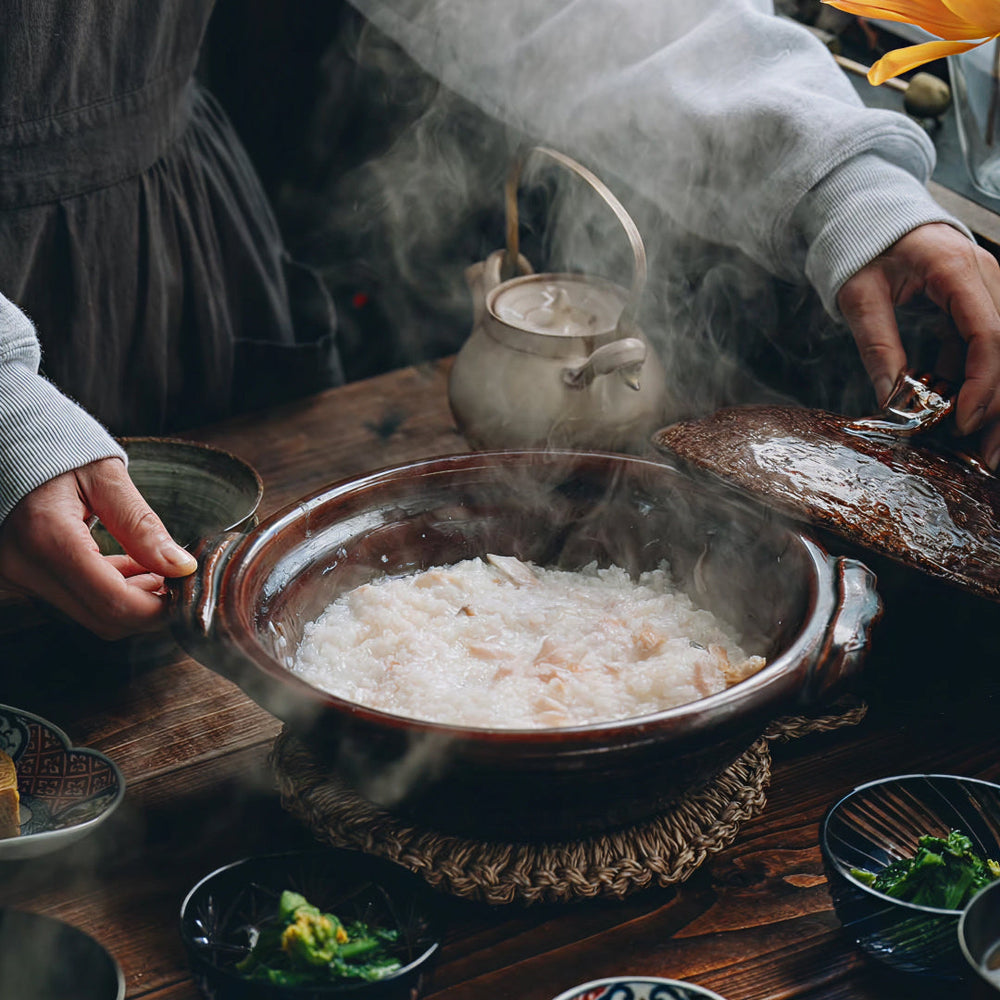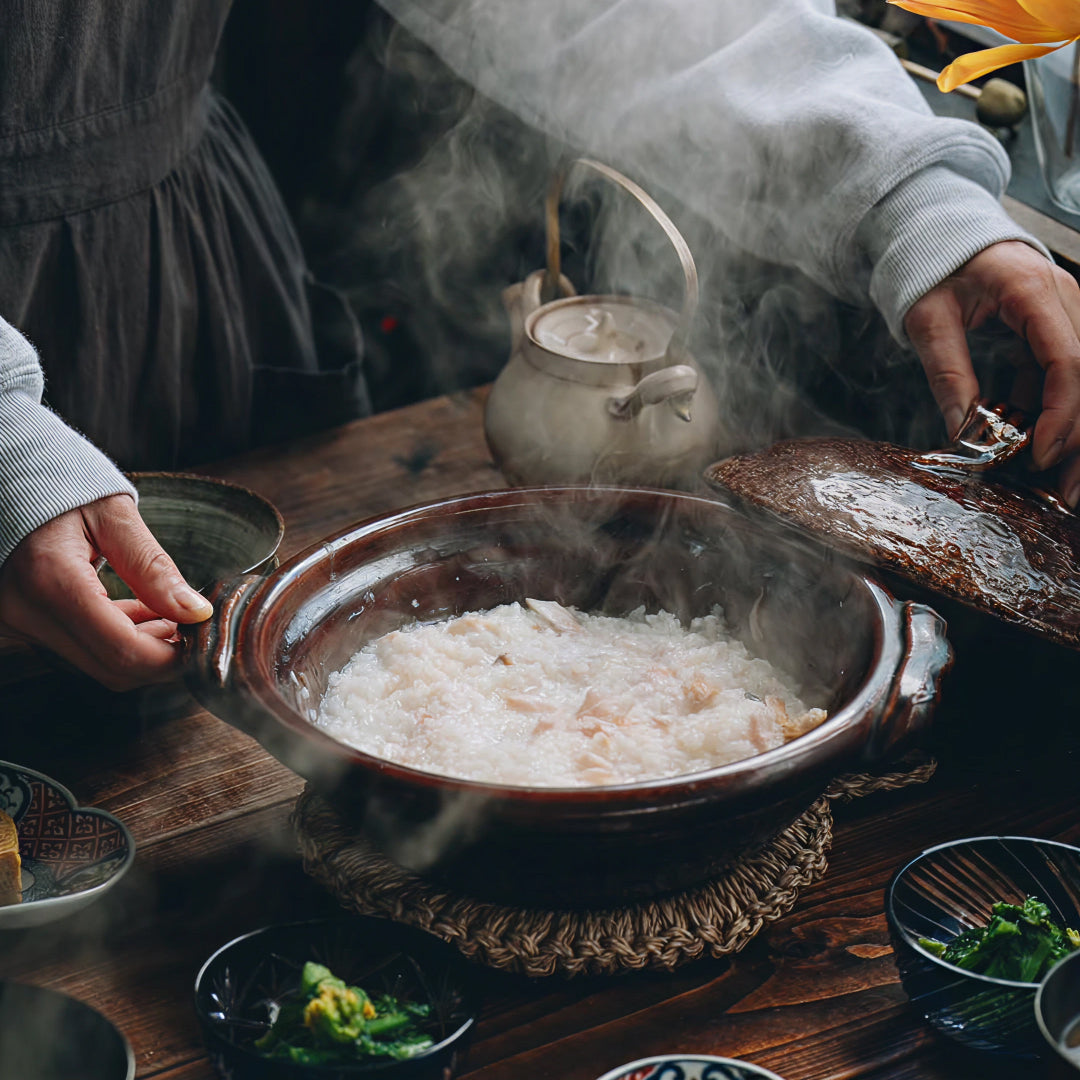Japan’s approach to wellbeing has long fascinated the world, and yet, to understand it, you must begin not in a clinic, but in a kitchen. Sit beside an elderly woman in rural Hokkaido as she tends her kombu broth or folds laundry still warm from the sun. Nothing she does is “for health,” yet everything she does sustains it.
Here are six things she might teach you about...
1. Shinrin-yoku (森林浴), forest bathing
“Listen carefully. The trees speak in a language slower than ours.”
Shinrin-yoku, or “forest bathing,” is perhaps the most emblematic of Japan’s health rituals. Though the term was coined in the 1980s, its essence runs back through Shintō and earlier animist beliefs, the idea that every tree and stream carries a kami, a living spirit worthy of reverence. The forest, in this sense, is not merely beautiful, it is inhabited, watching.
To “bathe” in the forest is to immerse the senses… the scent of cedar, the hum of insects, the soft crackle of soil beneath bare feet.
Modern research now confirms what Japanese elders have always known. Trees release phytoncides, antimicrobial compounds that calm the nervous system, reduce cortisol, and enhance the activity of natural killer cells. Even 20 minutes among trees can lower blood pressure and restore heart rate variability.
2. Kombu dashi (昆布出汁), seaweed broth for mineral repletion
While we may spend money on electrolyte powders and neon sports drinks, Japan has long had its own ancestral electrolyte.
Kombu, harvested from the cold northern waters of Hokkaido, is rich in iodine, calcium, magnesium, and trace minerals drawn up from the deep sea. When simmered gently (never boiled, so as not to cloud its sweetness), it releases umami, the fifth taste, meaning “essence of deliciousness.”
For centuries, kombu broth was the first food given after childbirth, illness, or fasting. Elders believed it “restored the salt of life,” replenishing what blood and breath had lost. The broth was also used for women recovering from menstruation or postpartum depletion, the sea’s minerals seen as restoring the internal tides of the womb.
Modern nutrition now echoes this wisdom... iodine from kelp supports thyroid function and hormone synthesis, while its calcium and magnesium balance the nervous system. The glutamates in kombu enhance nutrient absorption, turning simple soups and stews into mineral elixirs.
If kombu isn’t available, try other mineral-rich seaweeds like wakame, dulse, or Atlantic kelp. Even a pinch added to soups or grains can deepen flavour and nutrient content.

3. Ofuro (お風呂), the evening bath ritual
At dusk, the sound of running water carries through most Japanese homes. The ofuro, a deep wooden or porcelain tub is filled, the temperature precise, often infused with yuzu peel in winter or hinoki (cypress) leaves in summer.
Bathing in Japan is an art of surrender. It is neither indulgence nor hygiene but instead, purification. Once submerged, the heat expands blood vessels, releasing muscular tension. The body, long held upright by duty, softens. Circulation improves, the nervous system settles, and melatonin begins its nocturnal rise.
Elders say the bath washes away more than dirt, it dissolves tsukare, the fatigue of the spirit. Afterwards comes a light meal, perhaps rice porridge or pickled plum, and sleep, deep and untroubled.
The ofuro is, in its essence, a return to womb warmth, a nightly rebirth through heat and stillness.
4. Natsume (棗), jujube dates for post bleed replenishment
In Japan, the days following menstruation or childbirth are treated as a sacred time for restoration.The body is understood to be low in ketsu, blood energy, and is nourished slowly back to balance. One of the oldest restoratives for this is natsume, the jujube date.
Women would simmer dried jujubes with ginger and goji berries, letting the infusion turn the colour of dark tea. The drink replenished ketsu, the vital current thought to govern fertility, mood, and skin tone. To be low in ketsu was to feel cold, light-headed, or faintly hollow, symptoms of circulation and hormone imbalance we now understand in physiological terms.
Modern research affirms much of this old intuition. Jujube is dense in iron and vitamin C, a pairing that accelerates red blood cell synthesis. Its saponins act as gentle adaptogens, supporting adrenal recovery and moderating cortisol. Polyphenols and triterpenes within the fruit improve liver detoxification and protect against oxidative stress. Studies also show jujube to enhance serotonin production and increase slow-wave sleep, the deep stage of rest crucial for hormonal recalibration and cellular repair.

5. Rajio Taisō (ラジオ体操) , the morning broadcast of movement
Every morning across Japan, at precisely 6:30 AM, music begins to play on national radio. While it is most popular amongst the elderly (who are often its most loyal participants), in parks, schoolyards, factories, and office courtyards, people of all ages are still likely to join in. For three minutes, they move together, stretching, bending, circling their arms to the rhythm of a piano tune that has hardly changed since 1928.
This is Rajio Taisō, “radio calisthenics”, a nationwide exercise broadcast introduced nearly a century ago to promote health and community after the First World War. It endures not as obligation, but as habit, a ritual that collapses social hierarchy and unites bodies through rhythm. Elderly men, schoolchildren, and office workers move side by side, their gestures humble but synchronised, as if rehearsing the pulse of collective life.
Gentle morning movement improves circulation, enhances lymphatic flow, and primes the circadian system for wakefulness. The early sunlight exposure synchronises melatonin cycles, boosting mood and metabolic efficiency. But beyond the biology, Rajio Taisō is a daily act of belonging, a reminder that health, in Japan, is rarely a solitary pursuit.
6. Mottainai (もったいない), the spirit of no waste
Few words capture the Japanese worldview as completely as mottainai. Literally, it expresses “what a waste.” Spiritually, it is an expression of sorrow for the misuse or neglect of life’s gifts. To waste food, time, or materials is to disrespect the kami, the sacred essence residing within all things.
In the kitchen, mottainai takes form through acts of transformation: bones simmered into broth, fish heads turned into soup, vegetable peels boiled into dashi. Even leftover rice is steeped in tea to become ocha-zuke, humble, restorative, and born from nothing wasted.
Mottainai asks us to see sacredness in materiality, to recognise that the peel, the bone, the scrap of fabric, all carry stories of energy and labour. Anthropologists note that mottainai may have emerged from Japan’s Shinto roots, a worldview where spirit is embedded in every object, from the mountain to the teacup. To throw something away carelessly is to sever a spiritual thread.
In a disposable world, mottainai offers an ecological ethic that predates the language of sustainability by centuries. It teaches us to consume with awe.












